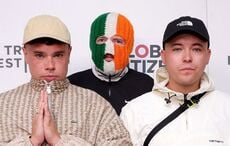When the curtain rises on Belfast’s new Lyric Theatre on May 1, it will not only mark a new dawn for Irish arts, but a poignant sense of history coming full circle.
The Lyric’s most famous “old boy” and now its patron, Liam Neeson, was particularly indispensable in making it happen.
He raised finance by hosting a series of glitzy dinner parties at the Manhattan homes of well-connected members of the diaspora including Loretta Brennan Glucksman (chair of the American Ireland Fund), Declan Kelly (U.S. economic envoy to Northern Ireland) and George and Angela Moore (owners of Belleek china).
The Belfast theater went all out to give local flavor and earthy charm to these soirees, jetting in the best ambassadors they could find, including BBC television chef Paul Rankin and singer Brian Kennedy. It paid off.
The VIP dinners, with their carefully chosen guest lists mixing celebrities like Meryl Streep with Wall Street financiers, raised as much as £250,000 ($410,000) a pop.
The real deal-maker, though, came when the Troy, Michigan-based Kresge Foundation got on board, offering to pledge half a million pounds if the Lyric team could raise a further £800,000 to a very strict deadline. “That was when the pressure was really on,” remembers chairman of the Lyric board, Mark Carruthers.
“But I knew it could take us over the line. It gave us leverage. It meant I could approach potential donors and say, ‘If you give us X amount now, it’s really worth X+Y.’ It’s a very smart way of fundraising and it definitely swung it for us.”
According to Carruthers, the formidable fundraising target of £18.1m ($29m) for the new building would never have been met without their behind-the-scenes input. Relatively little public money was forthcoming for the new Lyric, politicians remaining unconvinced about prioritizing a theater in an economic downturn, leaving Carruthers and his board-mates with an eight-year battle to reach the target.
As a young man, Nobel prize-winning poet Seamus Heaney was also closely involved with the opening of the original Lyric Theatre. Along with Michael Longley, Neil Shawcross, Basil Blackshaw, Helen Lewis, Joe Tomelty and Mary O’Malley, he spearheaded a rich, if small, artistic community in the north of Ireland – a religiously mixed community – who wanted no part in the sectarianism spreading like a cancer all around.




Comments